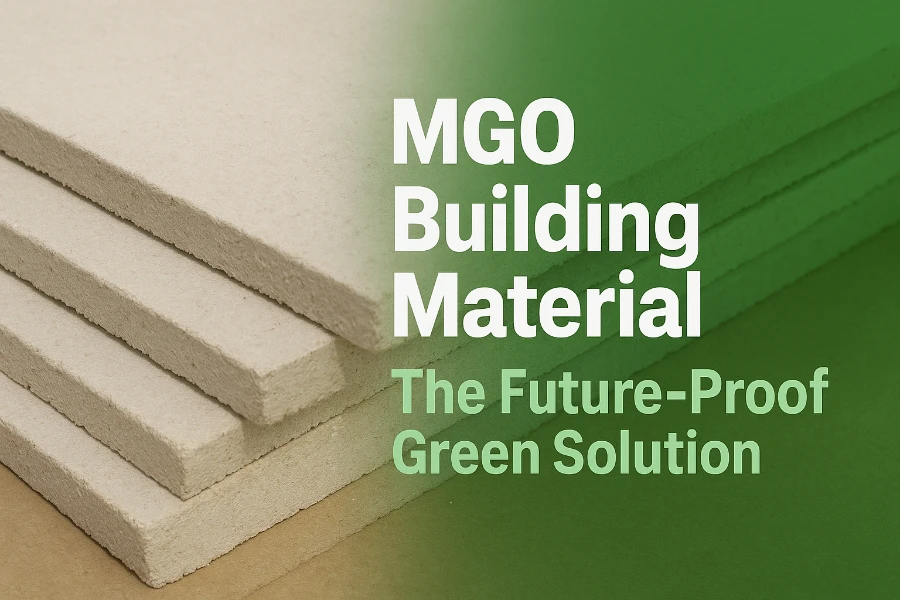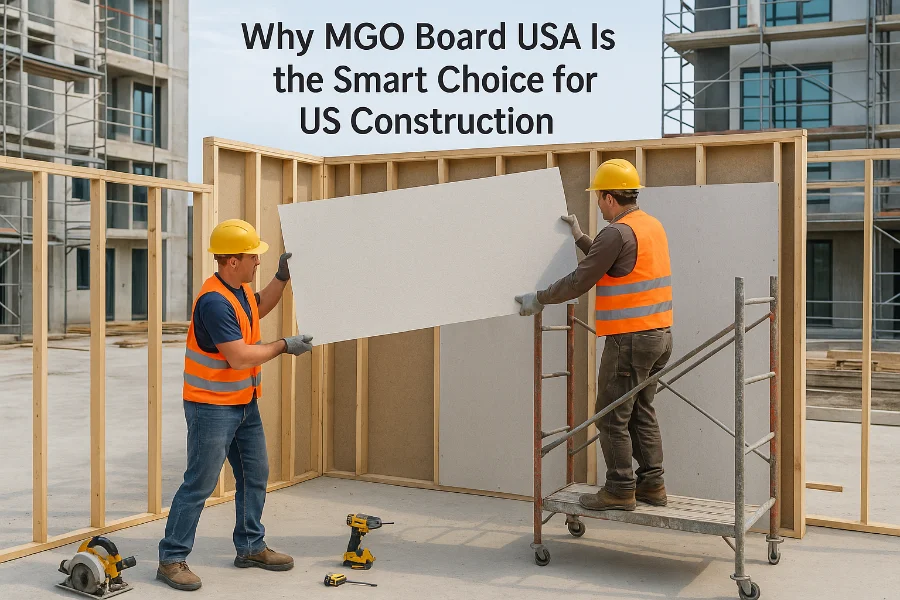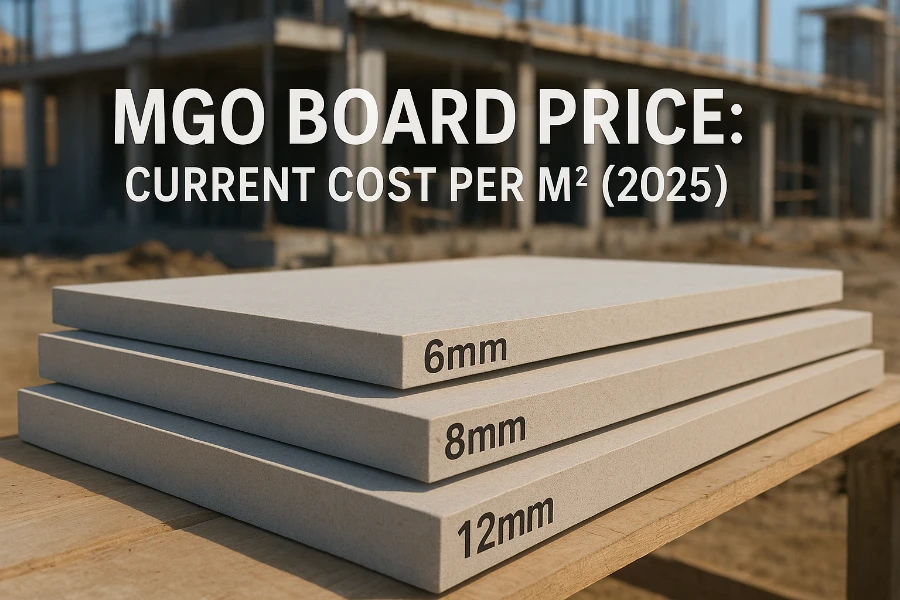Table of Contents
Introduction
In today’s construction industry, safety and efficiency are no longer optional—they are essential. Builders and architects are constantly looking for materials that can withstand fire, resist moisture, and provide long-term protection for buildings. This is where thermal sheeting comes into play. As a versatile category of protective panels, thermal sheeting enhances both structural durability and occupant safety.
Among the various options available, magnesium oxide (MgO) board is emerging as a leading solution. It combines superior fire resistance, eco-friendliness, and versatility, making it the smarter choice for safer and more sustainable construction projects.
What Is Thermal Sheeting?
Definition and Core Functions
Thermal sheeting refers to sheet materials specifically designed to provide protection against heat transfer, fire hazards, and environmental damage. In practical terms, thermal sheeting works as a barrier—keeping heat, flames, and moisture from compromising the structural integrity of buildings.
Common Materials Used
Traditionally, thermal sheeting has been made from materials such as:
-
Gypsum board: lightweight and affordable, but limited in fire resistance.
-
Fiberglass panels: good insulation properties, but fragile and not always suitable for structural use.
-
Cement board: stronger than gypsum, yet heavier and less eco-friendly.
Limitations of Traditional Options
While these conventional materials provide some level of protection, they often fall short in modern construction standards. Gypsum can break down under moisture, fiberglass is prone to damage, and asbestos is hazardous. Cement boards, although durable, come with high weight and environmental drawbacks.
This is why builders are increasingly turning to advanced materials like MgO board, which delivers the benefits of traditional thermal sheeting while solving many of its weaknesses.
Why Thermal Sheeting Matters in Modern Construction
The role of thermal sheeting in modern construction goes far beyond simply acting as a layer of protection. With stricter building codes, rising energy costs, and a growing focus on sustainable development, the choice of sheeting material has become a decisive factor in project success. Thermal sheeting influences not only safety but also comfort, efficiency, and long-term building performance.
Fire Safety and Building Codes
One of the most critical reasons thermal sheeting is essential lies in fire safety. Buildings today must meet international standards such as ASTM, EN, or local fire codes, which require materials to withstand high temperatures and slow down flame spread. Traditional panels like gypsum may provide basic protection but often fail during extended fire exposure. In contrast, advanced thermal sheeting solutions such as MgO board can resist fire for several hours, giving occupants more time to evacuate and reducing structural damage.
Moreover, insurance companies and developers are increasingly factoring in fire-resistant ratings when assessing building projects. Using the right thermal sheeting not only ensures compliance but can also lower insurance premiums and improve project approval timelines.
Energy Efficiency and Comfort
Thermal sheeting also plays a vital role in improving energy efficiency. By limiting heat transfer through walls, ceilings, and floors, it helps maintain indoor temperature stability. This means reduced reliance on heating and cooling systems, leading to lower utility bills and fewer greenhouse gas emissions.
For homeowners, effective thermal sheeting translates into a more comfortable living environment—warm in winter and cool in summer. For commercial spaces, it contributes to employee productivity and customer comfort by creating a stable indoor climate.
Long-Term Structural Protection
Beyond immediate fire and energy benefits, thermal sheeting also safeguards the long-term integrity of buildings. Moisture infiltration, for example, can weaken walls and cause mold growth. By incorporating thermal sheeting with strong resistance to water and humidity, developers can extend the life cycle of buildings and reduce maintenance costs.
This structural reliability is especially critical in areas with high humidity, heavy rainfall, or coastal climates where salt exposure accelerates material degradation. Thermal sheeting acts as both a shield and a stabilizer, ensuring that walls, ceilings, and floors maintain their strength and function for decades.
Magnesium Oxide Board as Advanced Thermal Sheeting
As construction materials evolve, magnesium oxide board (MgO board) has emerged as one of the most advanced forms of thermal sheeting available today. Unlike traditional options, it delivers a unique combination of fire resistance, durability, and environmental responsibility. This makes MgO board an ideal choice for architects, contractors, and developers seeking long-term safety and performance.
Superior Fire Resistance
MgO board is inherently non-combustible and can withstand temperatures exceeding 800–1000°C. In fire tests, it demonstrates remarkable performance by preventing flame spread and producing no toxic smoke. Compared with gypsum or wood-based panels, which fail rapidly under heat, MgO thermal sheeting maintains its structural integrity for much longer periods.
This superior fire performance provides peace of mind for residential homes, high-rise buildings, and public facilities where occupant safety is paramount. In many cases, MgO board can help projects achieve higher fire-rating classifications and compliance with international safety standards.
Moisture and Mold Protection
Traditional sheeting materials often degrade when exposed to moisture. Gypsum becomes soft and crumbles, while fiberboard swells and loses its shape. In contrast, MgO board resists water absorption and maintains dimensional stability even in humid or wet environments.
This quality makes MgO an excellent thermal sheeting solution for bathrooms, basements, kitchens, or coastal regions. Its resistance to mold and mildew growth also contributes to healthier indoor air quality, an increasingly important factor in modern building design.
Environmental and Health Benefits
Another advantage of MgO board is its environmental profile. Unlike asbestos-based products, MgO contains no harmful fibers or toxins. Its production process generates fewer carbon emissions than Portland cement, aligning with global sustainability goals.
Builders and developers who choose MgO thermal sheeting can market their projects as eco-friendly and safe, which is especially appealing to environmentally conscious homeowners and businesses. Moreover, its durability reduces the need for frequent replacement, further lowering the environmental footprint.
Versatility in Applications
One of the key strengths of MgO board as thermal sheeting lies in its versatility. It can be used for:
-
Walls and Partitions – providing both fire-rated protection and structural strength.
-
Ceilings – offering lightweight, durable, and moisture-resistant solutions.
-
Flooring Substrates – serving as a stable base that resists rot and warping.
-
Roof Sheathing – protecting buildings from heat and moisture while adding rigidity.
This wide range of applications positions MgO board not just as a replacement for older materials, but as a smarter and more comprehensive thermal sheeting solution.

Comparing MgO Board with Other Thermal Sheeting Materials
While many materials have been used as thermal sheeting in construction, not all of them provide the same level of safety, durability, or sustainability. Magnesium oxide (MgO) board clearly stands out when compared to conventional options such as gypsum board, asbestos board, and cement board.
Gypsum Board vs. MgO Board
Gypsum board is one of the most common thermal sheeting materials because of its affordability and ease of installation. However, its limitations are well known: it absorbs moisture, weakens in humid environments, and offers only moderate fire resistance.
MgO board, on the other hand, is non-combustible, highly resistant to moisture, and much stronger structurally. While it may cost slightly more upfront, the long-term savings in maintenance and repair make it a far more economical choice.
Asbestos Board vs. MgO Board
For decades, asbestos boards were considered reliable fire-resistant sheeting. Unfortunately, their use has been banned in most countries due to severe health hazards, including respiratory diseases and cancer.
MgO board delivers the same or greater fire protection without posing any health risks. It is safe to handle, environmentally responsible, and compliant with modern building codes.
Cement Board vs. MgO Board
Cement boards are durable and resistant to fire, but they are also heavy, difficult to cut, and can crack under stress. Their installation requires additional reinforcement, which slows down construction and increases labor costs.
By contrast, MgO board is lighter yet stronger, easier to work with, and can be cut using standard tools. This makes it a practical option for large-scale projects where speed and efficiency are critical.
Summary of Comparisons
-
Gypsum Board: Affordable but weak against fire and moisture.
-
Asbestos Board: Fire-resistant but banned due to health hazards.
-
Cement Board: Strong but heavy, costly, and less eco-friendly.
-
MgO Board: Combines the best qualities—fireproof, moisture-resistant, lightweight, eco-friendly, and versatile.
In short, when evaluating different types of thermal sheeting, MgO board consistently proves to be the smarter and safer choice for modern construction.
Practical Applications of Thermal Sheeting
Advanced thermal sheeting like magnesium oxide (MgO) board is not limited to one type of construction. Its versatility and performance make it suitable for a wide range of applications across residential, commercial, industrial, and public infrastructure projects.
Residential Buildings
In homes, thermal sheeting improves both safety and comfort. MgO boards can be used for interior walls, ceilings, and flooring underlayment. Their fire-resistant properties protect families in case of accidental fires, while moisture resistance ensures that bathrooms, kitchens, and basements remain mold-free. Additionally, their insulating properties help maintain a stable indoor temperature, reducing energy costs for heating and cooling.
Commercial Projects
Offices, shopping centers, hotels, and restaurants all benefit from advanced thermal sheeting. MgO boards provide superior fire safety, meet strict building codes, and contribute to energy efficiency. Lightweight and easy to install, they minimize construction downtime, which is crucial for businesses that need to open on schedule. Their eco-friendly nature also appeals to companies seeking green building certifications.
Industrial Facilities
Factories, warehouses, and processing plants often face higher fire risks due to machinery and stored materials. Thermal sheeting like MgO board can be used to line walls, ceilings, and partitions, creating fire-resistant zones that protect both personnel and assets. Its durability ensures minimal maintenance even under harsh industrial conditions, including humidity, vibration, or chemical exposure.
Public Infrastructure
Schools, hospitals, airports, and transportation hubs require materials that combine safety, durability, and long-term performance. MgO thermal sheeting provides fire protection, sound insulation, and resistance to moisture and mold. Its robust construction ensures that public facilities remain safe for occupants and reduce the need for costly repairs over time.
By applying MgO board in these scenarios, architects and builders can achieve multiple benefits at once: improved fire safety, structural reliability, energy efficiency, and environmental responsibility. This makes MgO board a practical and intelligent choice for any construction project.
Choosing the Right Thermal Sheeting Supplier
Selecting the right supplier is just as important as choosing the right thermal sheeting material. For projects using MgO board, a reliable supplier ensures consistent quality, timely delivery, and technical support, all of which directly impact construction efficiency and safety.
Quality Control and Certification
High-quality thermal sheeting must meet international standards for fire resistance, moisture protection, and environmental compliance. Look for suppliers that provide certified products, such as ASTM, EN, or ISO certifications. Reliable suppliers also maintain strict quality control during production to ensure each batch of MgO board performs consistently.
Stable Supply Chain
Construction projects often face tight schedules. A dependable supplier guarantees a steady supply of thermal sheeting materials, minimizing delays. This is particularly important for large-scale projects where hundreds or thousands of panels are required.
Technical Support and Customization
Modern construction projects may have unique requirements for thickness, size, or surface finish. Suppliers who offer technical support and customization services help ensure the MgO thermal sheeting fits the project’s specifications perfectly. Additionally, professional guidance on installation and handling maximizes the material’s performance and lifespan.
By partnering with a trusted supplier, builders not only secure high-quality thermal sheeting but also gain peace of mind, knowing their project is backed by expertise and reliability. For companies seeking advanced MgO boards, working with an experienced supplier like Suparna MgO Board ensures safety, efficiency, and sustainable building solutions.
Conclusion
Thermal sheeting plays a vital role in modern construction, providing fire protection, moisture resistance, energy efficiency, and long-term structural reliability. While traditional materials like gypsum, asbestos, or cement boards have served their purpose, magnesium oxide (MgO) board clearly represents the next generation of thermal sheeting.
With superior fire resistance, excellent moisture and mold protection, eco-friendly production, and versatile applications across residential, commercial, industrial, and public projects, MgO board is the smarter choice for safer, more sustainable construction.
For architects, builders, and developers seeking reliable, high-performance thermal sheeting, partnering with a trusted supplier ensures the best results. Suparna MgO Board offers certified, high-quality products, professional technical support, and customizable solutions to meet the unique demands of any construction project.
Discover how MgO board can transform your next building project—contact us today to explore smarter thermal sheeting solutions.
Discover why MGO building material is the future-proof green solution for durable, fire-resistant, and eco-friendly construction projects.
Discover why MGO board USA is the smart choice for American construction—fire-resistant, durable, eco-friendly, and compliant with US building standards.
Discover the current MGO board price per m² in 2025. Learn factors affecting cost, compare with fiber cement boards, and get tips to save on your project.




